Kate Forsyth's Blog, page 55
June 10, 2013
BOOK REVIEW: Scarlet in the Snow by Sophie Masson
Author: Sophie Masson
Publisher: Random House Australia
Age Group & Genre: YA fairy tale retelling
[image error]
The Blurb:
A deserted mansion. Empty picture frames. A perfect red rose in a snowy garden. There is rich and powerful magic here, and a mystery to unravel . . .
When Natasha is forced to take shelter from a sudden, terrible blizzard, she is lucky to see a mansion looming out of the snow. Inside it is beautiful: the fire lit, the table set. But there is no one there. And on the walls, instead of paintings, are empty frames.
In the garden, she finds one perfect red rose about to bloom, a vivid splash of scarlet against the snow. Dreamily she reaches out a hand . . .
Only to have the master of the house appear – a terrifying, gigantic creature who looks like a cross between a bear and a man – and demand vengeance on her for taking his rose.
So begins an extraordinary adventure that will see Natasha plunged deep into the heart of a mystery. She begins to realise she has stumbled upon a great tragedy – a spell of revenge laid on the young man the Beast once was, devised by a powerful sorcerer.
But even if she can break the spell, the Beast she has now come to love will be snatched from her. Natasha will have a long journey, and many ordeals, ahead of her before there can be a happy ending.
Inspired by two beautiful Russian fairytales – The Scarlet Flower (the Russian version of Beauty and the Beast) and Fenist the Falcon, Scarlet in the Snow is a beguiling mix of magic, romance, adventure and mystery.
What I Thought:
I just loved this retelling of the Beauty and the Beast fairy tale, told with flair, dash, and panache, by one of my favourite Australian women writers. Sophie Masson has really found her niche with these books ('Scarlet in the Snow' is set in the same alternative-world as Sophie's previous novel, 'Moonlight & Ashes', which was one of my BEST BOOKS READ IN 2012.)
Do not expect a straight retelling a la Robin McKinley's 'Beauty'. Sophie Masson has instead used the fairy tale as a springboard to create a whole new romantic adventure. The story is full of snowstorms, lavish feasts, mysteries and surprises - I loved it!
June 8, 2013
BOOK LIST: Books Read in May 2013
So I only read eight books, and some of these were very short. That brings my reading for the year to over 50 books, though, so I don't need to feel too ashamed.
Enchanted April – Elizabeth von Arnim
This beautiful book is an old classic - first published in 1922 - that I have had so many people recommend to me that I finally ordered it in. I'm so glad I did - I loved it! It tells the story of four women - strangers to each other - who rent a castle in Italy for the month of April. All four are hiding bruised souls, and all four will be healed during that magical month in San Salvatore. The style is old-fashioned and rather quaint, but suits the story, and the book brims over with the promise of being able to recover and restore our lives. It made me want to hire a castle in Italy very, very badly! I watched the video too, and I think I loved that even more. A radiant story of friendship and redemption.
[image error]
The Girl Who Circumnavigated Fairyland in a Ship of her Own Making – Catherynne M. Valente
How to describe this wonderful children's fantasy? Its fresh, whimsical, and a little strange; it shows remarkable daring and playfulness on the part of the author, which delights me. It reminds me of authors like James Thurbur and Mervyn Peake, with less of the darkness and more of the imaginative exuberance. I'm happy to say I'll be running a longer review and an interview with Cat in upcoming weeks - keep your eyes peeled!
[image error]
The Thief – Megan Whalen Turner
I wasn't sure about this book at first. It seemed a little slow. And, although I loved the voice of the main character - an opinionated and arrogant thief named Gen - I found the world of quasi-Ancient Rome a little like other books I'd read. I voiced my opinion on twitter, and go a flood of people saying 'read on! read on!' I'm glad that I did. The world and the characters got more interesting, and then - at the very end - there is a clever twist that I honestly did not see coming. (This rarely happens to me). Now all those tweeps are saying to me read on! read on! Book 2 & 3 are even better ... and you know what? i think I shall read on.
[image error]
The Shadow Year – Hannah Richell
I loved this book! One of the best reads of the year so far. I've interviewed Hannah for the next issue of Good Reading Magazine so I urge you to hunt down the mag and read more about it there - I will just say that this is a perfectly structured and beautifully written novel which uses parallel narratives to stunning effect. A compelling and suspenseful novel about family, love, and loss.
[image error]
The Sword of the Rightful King – Jane Yolen
As one might guess from the title, this is a retelling of the Arthurian myth. I overdosed on these quite a few years ago and have been avoiding them ever since. However, this is Jane Yolen, a writer who I LOVE. So I bought and read it, and enjoyed it hugely. Jane's writing is as easy and supple as ever, the characters are vivid and alive, and the story turned inside out and made new. I can really recommend it.
[image error]
Fearless – Daniel Morden
Dark Tales from the Woods – Daniel Morden
Tree of Leaf and Flame - Daniel Morden
[image error]
Daniel Morden is a wonderful Welsh storyteller - I heard him speak at the Sydney Writers Festival and loved his subtle, clever and humorous style. He has retold a number of old tales in book form, including Fearless, better known as the Grimm tale The 'Boy Who Went Forth to Learn what fear is'. Dark Tales of the Woods is a collection of retold tales from Abram Wood, called King of the Gypsies (I actually reference him in 'The Herb of Grace', Book 3 of the Chain of Charms - he is said to have introduced the fiddle into Wales) while Tree of Leaf and Flame draws upon the Mabinogi, the famous Welsh myth cycle. The tales themselves are simple but elegantly told. Some are funny, some are frightening, all are wonderful.
Books Read in April 2013
June 7, 2013
BOOK LIST: My Favourite Books by My Favourite Australian aUTHORS
Get Reading! is running a search for the favourite Australian books of all time. I've given them a list of some of my favourite books by my favourite Australian authors - here are 16 books by my favourite Australian contemporary authors. I will compile a list of my favourite classic authors very soon.
Vote for your favourites at the Get Reading! website
Jesse Blackadder - THE RAVEN'S HEART
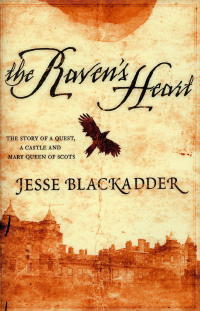
Geraldine Brooks - YEAR OF WONDERS
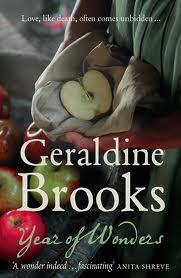
Alison Croggon - THE GIFT
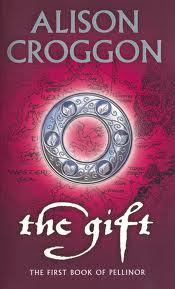
Kimberley Freeman - WILDFLOWER HILL
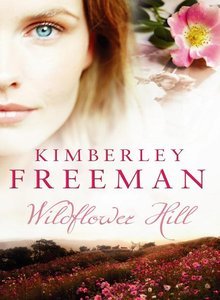
Pamela Freeman - BLOOD TIES
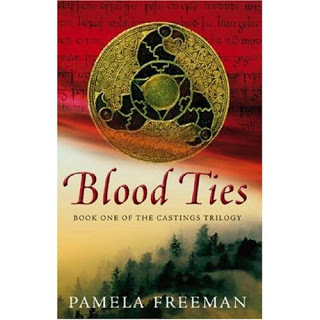
Kate Grenville - THE SECRET RIVER
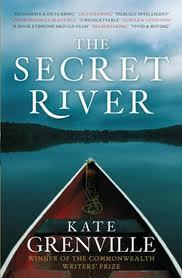
Lian Hearn - ACROSS THE NIGHTINGALE FLOOR
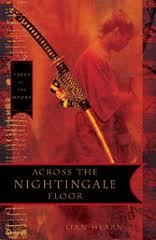
Toni Jordan - NINE DAYS
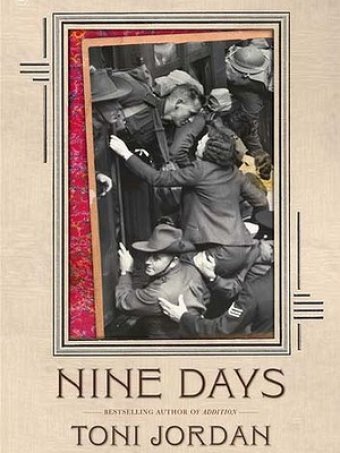
Margo Lanagan - SEA HEARTS

Fiona McIntosh - THE LAVENDER KEEPER

Juliet Marillier - DAUGHTER OF THE FOREST

Kate Morton - THE FORGOTTEN GARDEN

Belinda Murrell - THE RIVER CHARM
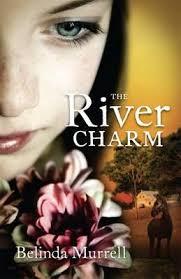
Hannah Richell - THE SHADOW YEAR
[image error]
Kim Wilkins - ANGEL OF RUIN
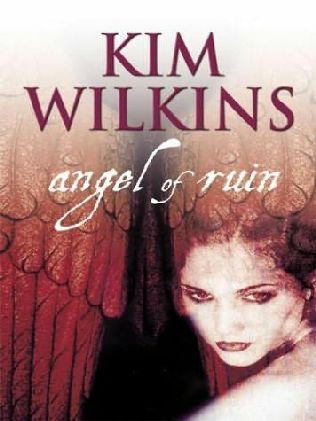
Marcus Zusak – THE BOOK THIEF

June 6, 2013
INTERVIEW: Michelle Cooper, author of 'The Montmaray Journals'
Today I interview one of Australia's most talented writers for young adults, Michelle Cooper, the author of the charming trilogy known as 'The Montmaray Journals'.
[image error]
Michelle was born in Sydney, Australia but went to school in Fiji and rural New South Wales. She worked as a speech and language pathologist for fifteen years.
Her second novel, A Brief History of Montmaray, was awarded the Ethel Turner Prize for Young People's Literature in the NSW Premier's Literary Awards and was shortlisted for the Gold Inky, Australia's teenage choice book award. In America, where it published by Alfred A. Knopf Books , it was named in the American Library Association's Best Books for Young Adults list.
The FitzOsbornes in Exile, the second book in The Montmaray Journals trilogy, was shortlisted for the Ethel Turner Prize and the Western Australian Premier's Young Adult Book Award, longlisted for the Gold Inky Teenage Choice Award, and named a Notable Book for Older Readers by the Children's Book Council of Australia. In the US, it was listed in the Best Teen Books of 2011 by Kirkus Reviews and in the American Library Association's 2012 Best Fiction for Young Adults.
The FitzOsbornes at War, the final book in The Montmaray Journals trilogy, was published in Australia and New Zealand in April 2012 and in North America in October 2012
[image error]
Here Michelle is kind enough to answer my usual questions:
Are you a daydreamer too?
Of course! At school, I’d finish assigned tasks as quickly as possible, so that I could spend the rest of the lesson gazing out the window and making up stories in my head. (I was an inconspicuous child, so teachers didn’t usually notice what I was doing.) I still drift off into imagined worlds when I’m doing tedious chores like grocery shopping or cleaning the bathroom, although now I call it ‘planning a new book’ rather than ‘daydreaming’.
Have you always wanted to be a writer?
Almost always – ever since I realised that the books I loved reading had actually been created by a person called an ‘author’. I dreamed that one day I’d have a book of my own published, although I didn’t truly believe that would ever happen. Except now it has! I feel very fortunate.
Tell me a little about yourself – where were you born, where do you live,
what do you like to do?
I was born in Sydney, but my family moved to Fiji when I was young, and after that we lived in various Australian country towns. I changed schools frequently and often felt lonely and unhappy, so I escaped into the world of books. It all worked out well in the end, though, because if I hadn’t been an avid reader then, I wouldn’t have grown up to be a writer. I live in the inner west of Sydney now and I still love reading books.
How did you get the first flash of inspiration for this book?
[image error]
The first book in the Montmaray Journals trilogy, ‘A Brief History of Montmaray’, began with a picture that appeared in my mind of a teenage girl sitting on the wall of a castle, writing in her diary. I decided she was an impoverished princess and suddenly all sorts of other characters – pirates, ghosts, aviators, sea monsters, Nazis on a quest to find the Holy Grail –started clamouring to join her story.
The following books, ‘The FitzOsbornes in Exile’ and ‘The FitzOsbornes at War’, were inspired to a large extent by real historical events – the political turmoil of 1930s Europe, and then the cataclysm of the Second World War.
How extensively do you plan your novels?
I had to do a lot of planning for the Montmaray books, because I wanted my fictional characters to witness actual historical events and interact with real people from the time. For ‘The FitzOsbornes at War’, I spent about eight months researching life in wartime Europe and thinking about the roles my characters would play, then trying to fit all of this information into a cohesive, compelling narrative.
Do you ever use dreams as a source of inspiration?
I’ve noticed that since I started writing novels, my dreams have tended to follow a standard narrative structure, with an initial complication, escalating tension and some sort of resolution. Sometimes, even deep within a nightmare, my dream self will think, ‘This would make a great book! I just need to think of a happier ending!’ I did recently write a short story based on a dream I had, but it’s a very weird story so I haven’t let anyone read it yet.
Did you make any astonishing serendipitous discoveries while writing this book?
Yes, I uncovered some intriguing stories about the Second World War while doing research for ‘The FitzOsbornes at War’. For instance, I already knew that the Duke of Windsor, who gave up the British throne to marry Wallis Simpson, had Fascist sympathies. However, I was fascinated to learn of a Nazi plot to lure him into Fascist Spain, where he could ‘hold himself in readiness’ until the Nazis conquered Britain. The idea was that the Duke would then resume the throne as Hitler’s puppet king and appoint a suitably Fascist Prime Minister, such as Oswald Mosley.
That same year, there was a spy scandal at the American Embassy, involving a glamorous White Russian with links to Wallis Simpson, an American cypher clerk and a virulently anti-Semitic British MP. This was all rather embarrassing for the American Ambassador, Joseph Kennedy (yes, one of those Kennedys), who’d had no idea that top-secret communications from President Roosevelt were being stolen from the Embassy and handed over to the Nazis. This wasn’t very serendipitous for Mr Kennedy (or the Duke of Windsor or Oswald Mosley), but it was very helpful for my plot.
Where do you write, and when?
I write at my desktop computer, in a cramped corner of my bedroom, with my research notes spread out on the bed behind me. As for when I write, I’d like to pretend I work from nine to five, with a brief break for lunch, with absolutely no messing about and wasting time on the internet. I don’t think anyone would believe me if I said that, though.
What is your favourite part of writing?
The times when I’m completely engrossed in the story – when I’m chortling at the funny dialogue, or sniffling because my narrator’s feeling sad, when I glance over at the clock and realise I’ve been caught up in my invented world for hours. I also love the part when the writing is done and the book is out in the world. I’ve had such lovely emails from readers and read some wonderful reviews. It’s such a thrill to realise the characters in my head have escaped and set up camp in other people’s heads.
What do you do when you get blocked?
Fall into a pit of despair. Become convinced I will never finish writing this book. Moan about this to my friends, who remind me that I said exactly the same thing when I was writing my previous book. If a publishing deadline is looming, I usually manage to climb out of my Despair Pit fairly quickly and get back to work.
How do you keep your well of inspiration full?
I’m inspired by lots of things in real life – reading newspapers, eavesdropping on conversations at the bus stop, looking at old buildings or at ancient artefacts in museums and wondering about their histories. I’m also inspired by reading books, fiction and non-fiction. I don’t tend to find myself at a loss for new ideas – the difficulty is working out which of these many ideas can be turned into a viable story.
Do you have any rituals that help you to write?
No, unfortunately I don’t. Do you know any effective ones?
Who are ten of your favourite writers?
Anne Tyler, Sumner Locke Elliott, Sarah Waters, Margaret Atwood, Ruth Prawer Jhabvala, Stella Gibbons, Zoë Heller, Elizabeth Jane Howard, Rumer Godden, Peter Cameron . . . Wait, I can only choose ten? This is so unfair!
[image error]
(I love Rumer Godden too, particularly The Greengage Summer)
What do you consider to be good writing?
I like reading about characters who have something interesting to say, who act in plausible but unexpected ways, who make me want to follow them on their journey – whatever form that might take – because I absolutely need to know what will happen to them. It’s more difficult to describe ‘good writing’ at paragraph, sentence and word level, because it depends so much on the narrator’s voice and what the author is trying to achieve. Sometimes ‘good writing’ is beautifully ornate, and sometimes it’s stark and confronting. But if I keep getting thrown out of the story because I’m constantly questioning the author’s word choices or sentence structures, then I tend to classify that as ‘bad writing’.
What is your advice for someone dreaming of being a writer too?
Anyone can be a writer. All you need is a pencil and a piece of paper (or a computer, if you want to get all hi-tech about it) and a burning desire to turn your ideas into words. Being a published writer is more difficult, especially if you want to be published by a large traditional publishing company, but there are lots of self-publishing options these days. My advice to aspiring authors is to read as widely and thoughtfully as possible; to write about what fascinates you, rather than what you think will sell; and to be willing to accept editorial advice and write draft after draft until you get it right. Be persistent and stubborn, but don’t forget to take pleasure in the process of writing. Your finished manuscript probably won’t make you rich or famous, but there are other, less tangible, rewards for writers.
What are you working on now?
I’m writing a novel for teenagers about science and history, set in Sydney. My last novel had a lot of sad bits in it, so this one is full of jokes.
June 4, 2013
BOOK LIST: Books set in '20s & '30s
Michelle Cooper, author of the wonderful 'Montmaray Journals' has compiled a list for me of books set in the same historical period - the 1920s and 1930s. There are some great recommendations here:
[image error]
It seems to be compulsory for reviews of ‘A Brief History of Montmaray’ to mention Dodie Smith’s classic coming-of-age novel, ‘I Capture the Castle’, and it’s certainly flattering to have my work compared to such a beloved book. Both involve a teenage girl writing in her diary and living in a crumbling castle with her eccentric family – although I don’t recall any princesses, pirates, sea monsters, ghosts, Nazis or gory murders in ‘I Capture the Castle’.
[image error]
One reviewer also described ‘A Brief History of Montmaray’ as a modern version of the Brontës mixed with the Famous Five. After I’d finished feeling indignant (about the Enid Blyton bit, not the Brontës), I remembered my book did include Cornish smugglers, seaside caves, secret tunnels, a mad uncle, a tomboy and a loyal dog . . . so all those Famous Five books I read as a child must have had more of an effect on me than I’d realised.
[image error]
On the other hand, reviews of ‘The FitzOsbornes in Exile’ tend to mention either ‘Downton Abbey’ or the Mitfords. As I haven’t seen ‘Downton Abbey’ and it’s not a book, I won’t discuss it here.
However, I can’t resist an opportunity to rhapsodize about my favourite Nancy Mitford novels, ‘The Pursuit of Love’ and ‘Love in a Cold Climate’, both set in the 1920s and 1930s, and based on the author’s eccentric, upper-class English family.
[image error][image error]
If you enjoy hilarious, irreverent stories about innocent debutantes and their ambitious mothers, French dukes and exiled European royalty, country estates and London Society, you will love these books.
Nancy Mitford also manages to include some sharp observations of 1930s politics – which isn’t all that surprising, given her family history (her sisters Diana and Unity were devotees of Hitler, while another sister, Jessica, ran away from home as a teenager to join the Communist side in the Spanish Civil War).
There’s a lot of interesting non-fiction by and about the Mitford sisters. My favourites are ‘Hons and Rebels’, the first volume of Jessica Mitford’s memoirs, and ‘The Mitfords: Letters Between Six Sisters’, edited by Charlotte Mosley.
[image error]
‘The FitzOsbornes at War’, the final Montmaray book, is mostly about life in England during the Second World War. There are a lot of great novels set in this period, but among my favourites are the Cazalet Chronicles, by Elizabeth Jane Howard. This is a wonderful series that follows the changing fortunes of a wealthy middle-class English family throughout the war and beyond. The four novels – ‘The Light Years’, ‘Marking Time’, ‘Confusion’ and ‘Casting Off’ – are based on the real-life experiences of the now ninety-year-old author, who has just announced that she’s working on a fifth Cazalet book. Some other favourite Britain-at-war novels are ‘Small Island’ by Andrea Levy, about the experiences of Jamaican airmen stationed in Britain, and ‘The Night Watch’ by Sarah Waters, which cleverly links the stories of four Londoners, all of them on the outskirts of respectable society because they’ve fallen in love with the ‘wrong’ people. Readers who liked Toby’s story in ‘The FitzOsbornes at War’ may also enjoy ‘The Charioteer’ by Mary Renault (although ‘enjoy’ probably isn’t the best word to use about a book set mostly in a military hospital). Finally, for those looking for some non-fiction that isn’t excessively long or academic, I recommend ‘Debs at War 1939-1945: How Wartime Changed Their Lives’ by Anne de Courcy, about the privileged young British women who joined the services, drove ambulances, nursed the wounded and worked in factories and on farms during the war.
June 2, 2013
BOOK REVIEW: The Montmaray Journals by Michelle Cooper
[image error]
Title: The Montmaray Journals:
1) A Brief History of Montmaray
2) The FitzOsbornes in Exile
3) The FitzOsbornes At war
Author: Michelle Cooper
Publisher: Random House
Age Group & Genre: Historical Fiction for Young Adults
The Blurbs:
Book 1: A Brief History of Montmaray
Sophie FitzOsborne lives in a crumbling castle in the tiny island kingdom of Montmaray with her eccentric and impoverished royal family. When she receives a journal for her sixteenth birthday, Sophie decides to chronicle day-to-day life on the island. But this is 1936, and the news that trickles in from the mainland reveals a world on the brink of war. The politics of Europe seem far away from their remote island—until two German officers land a boat on Montmaray. And then suddenly politics become very personal indeed.
A Brief History of Montmaray is a heart-stopping tale of loyalty, love, and loss, and of fighting to hold on to home when the world is exploding all around you
Book 2: The FitzOsbornes in Exile
Forced to leave their island kingdom, Sophie FitzOsborne and her eccentric family take shelter in England. Sophie's dreams of making her debut in shimmering ballgowns are finally coming true, but how can she enjoy her new life when they have all lost so much?
Aunt Charlotte is ruthless in her quest to see Sophie and Veronica married off by the end of the Season, Toby is as charming and lazy as ever, Henry is driving her governess to the brink of madness, and the battle of wills between Simon and Veronica continues. Can Sophie keep her family together, when everything seems to be falling apart?
An enticing glimpse into high society, the cut and thrust of politics as nations scramble to avert world war, and the hidden depths of a family in exile, struggling to find their place in the world.
Book 3: The FitzOsbornes at War
Michelle Cooper completes her heart-stealing epic drama of history and romance with The FitzOsbornes at War.
Sophie FitzOsborne and the royal family of Montmaray escaped their remote island home when the Nazis attacked. But as war breaks out in England and around the world, nowhere is safe. Sophie fills her journal with tales of a life during wartime. Blackouts and the Blitz. Dancing in nightclubs with soliders on leave. And endlessly waiting for news of her brother Toby, whose plane was shot down over enemy territory.
But even as bombs rain down on London, hope springs up, and love blooms for this most endearing princess. And when the Allies begin to drive their way across Europe, the FitzOsbornes take heart—maybe, just maybe, there will be a way to liberate Montmaray as well.
What I Thought:
I read the first book in this wonderful series in manuscript form, which is why the first edition has a quote from me on the cover. I wrote: ‘bittersweet and delectable, this book deserves to be an instant classic.’
I haven’t changed my mind. I really loved ‘A Brief History of Montmaray’, and I recently read the final two books in the series as well and loved them just as much.
The books are written as a diary kept by the teenage heroine, Sophie FitzOsborne, a princess of the royal family of Montmaray, a tiny (fictional) kingdom in the middle of the Bay of Biscay between France and Spain.
Sophie’s voice rings utterly true, as does the dialogue of the rest of her charming and eccentric family.
The story begins in Montmaray, but then moves to England during the Second World War. The family’s home has been occupied by German forces, and Sophie must struggle with homesickness as well as all the vagaries of growing up in the shadow of the war. She has romantic yearnings, longs for pretty clothes, and gets caught up in political intrigue and spying, all the why trying to manage her unruly brother, sister and cousins.
Michelle Cooper’s ‘The Montmaray Journals’ have often been compared to ‘I Capture the Castle’ by Dodie Smith, which is one of my all-time favourite young adult novels. It has the same real and vivid voice, the same sense of wistfulness, the same tender exploration of growing up and falling in love for the first time.
However, ‘The Montmaray Journals’ have an extra edge because of the time and place of their setting – Sophie writes about the slow escalation towards war, the hope for conciliation, the rise of Fascism, and the very real immediacy of the consequences of war. These books feel real – and I could only wish that Michelle Cooper would write another three!
[image error]
May 30, 2013
INTERVIEW: Essie Fox, author of 'The Somnambulist
Essie Fox is an English author and illustrator, whose first book, 'The Somnambulist', is a dark Victorian melodrama featuring family secrets, a mysterious grand house, a spooky pre-Raphaelite painting, flamboyant actors and soothsayers, repressed religious cymbal-shakers, and a murder. What more could anyone ask for?
Here, Essie answers my usual questions about daydreaming, reading, writing and sources of inspiration,and talks about her new book, 'Elijah's Mermaid', which sounds utterly fascinating and is so going on my MUST BE READ list
Are you a daydreamer too?
I have always been a daydreamer. As a child I used to lie in bed making stories up inside my head – often speaking some of the parts aloud. If I had a favourite book or television drama then I would try to continue those stories, taking the characters I loved the best (don’t’ they call that fan fiction these days?) and then hoping that I would go to sleep and continue to dream of them again. Something else that I loved to do, and still do now, was to think of my favourite fairy tales and then spin new ones around them – I think you must understand that all too well, Kate!
Have you always wanted to be a writer?
It took me a while to see the wood for the trees. I always loved reading and the study of literature. But I interpreted that interest as a desire to work on the editorial side of the publishing world. It wasn’t until I was much older, when my daughter had grown up and left home, that I actually had the time and the courage to ‘see’ what my dream really was.
Tell me a little about yourself – where were you born, where do you live, what do you like to do?
I was born in the English countryside, in a small town in rural Herefordshire which is on the Welsh borders. I left there to study at Sheffield university and from there I came to London. Now, I am based between Bow in East London and the town of Windsor, which is very much to the west of the city. You could not really find two more different areas – and both provide settings for my work.
How did you get the first flash of inspiration for this book?
For The Somnambulist, there were two main inspirations. One was a painting by Millais which is called A Somnambulist and which many say was itself inspired by Wilkie Collins’ sensational novel, 'The Woman in White'.
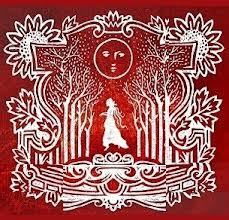
The second inspiration was when I went to visit an old music hall in London’s East End. Even though it is now crumbling and in a sorry state of repair, the hall simply came alive for me. I could hear the popping of champagne corks, the clatter, the bang and the laughter as if it was all still lingering there, an echo from its Victorian heyday. The next morning I woke up with three distinct characters in my mind – and one of them was a singer who worked in the music halls.
For my second Victorian novel, which is called Elijah’s Mermaid, a painting was once again a great source of inspiration. This time it was A Mermaid by JW Waterhouse, and that image then led me to think about an imaginary Victorian artist who is increasingly obsessed – to the point of madness – with painting his muse as a mermaid or nymph.
[image error]
How extensively do you plan your novels?
Not at all. I have that first spark of inspiration – almost like a buzz of excitement that simply can’t be shaken off until I write the ideas down. I usually know the beginning and have a fair idea of how the novel will end, but as to how I get there...that is very much unknown. I like to let things develop – for the characters to take control.
Do you ever use dreams as a source of inspiration?
Not as such – I tend to dig deep into memories. But once a book is being written, I do find myself dreaming about the characters, and often waking with fragments of their dialogue in my mind – as if my brain is still working away on the story while I’m sleeping. It’s also a bit like a crossword puzzle, in that the dormant brain can often come up with solutions to plot problems, or to clarify a dramatic situation that was less obvious when awake.
Did you make any astonishing serendipitous discoveries while writing this book?
With the book that I am writing at the moment - yes! I was recently Googling a very mundane household matter, regarding some local planning applications. When I typed in my house address I was directed to a local history site where someone was discussing the life of a Victorian woman who established a house of refuge for unmarried mothers and prostitutes. That woman happened to die in my house, though she did not own it. I think she must have been a friend of the residents. Anyway, it turns out that her refuge was called The House of Mercy - and in the novel I’m writing now, the imaginary Victorian woman who lives in and owns my (real) house is a spiritualist medium whose name happens to be Mercy – almost as if another version of The House of Mercy.
Where do you write, and when?
For the first draft of a novel, I confess that I mostly write in bed. I have a little table on legs (an invalid, or breakfast table) and my laptop fits onto that perfectly. It’s very comfortable – if not a little embarrassing if people call in the middle of the afternoon, when I might have to answer the door while still in my pyjamas.
What is your favourite part of writing?
That first buzz of inspiration when the concept of story is so exciting that you simply can’t wait to start writing. It really is the best high in the world.
What do you do when you get blocked?
I go for a walk with the dog.
I also find that if I take a few days off and go to stay somewhere completely then different ideas will suddenly flow again. It’s almost as if a change of scene allows the mind to free itself – or to see things in entirely different ways.
How do you keep your well of inspiration full?
Oh, it’s almost too full. I have so many ideas that I would like to develop, and I know I’ll never have the time to take them all through to completion. If only novels didn’t take such a long time to write!
But, the things that I find most inspiring are almost always visual – films, scenery, paintings, objects seen on visits to museums. There will almost always be something which plants a seed in my imagination.
Do you have any rituals that help you to write?
No – only the first cup of coffee that I get up to make every morning. I don’t start to write at all until that coffee is there by my side
Who are ten of your favourite writers?
Oh, ten doesn’t really seem enough and this is something that changes with me from day to day, or week to week. But, at the moment...
Chaucer
Wilkie Collins
Thomas Hardy
Muriel Spark
Graham Green
Angela Carter
Sarah Waters
Kate Atkinson
Rose Tremain
John Fowles
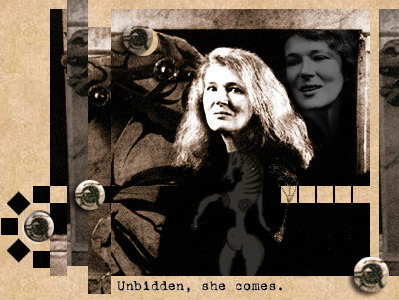
Angela Carter (image from The Scriptorium)
What do you consider to be good writing?
Something that has a clever and intriguing plot, with characters that I can relate to. Something that moves me and enthralls me, and that makes me think – wow – if only I could do that.
What is your advice for someone dreaming of being a writer too?
Write, write, write. But, also read, both the best in your chosen genre or style, but also as widely as you can.
Don’t try to write for the market. Publishing moves so slowly that by the time your novel is completed that ‘fashion’ may well be on its way out. Instead, write from your heart – what obsesses you – what you would love to read yourself. That passion will always shine through and help to make your work sparkle.
What are you working on now?
My third Victorian novel. It’s all about the theft of a sacred Indian diamond, with curses and prophecies and Hindu gods. There is a glamorous maharajah, and also a spiritualist medium, not to mention a charismatic villain and quite a lot of ghosts. It’s the most overtly paranormal novel that I’ve ever attempted to write. I’m having such fun with it.
I have to say it sounds wonderful!
May 28, 2013
BOOK LIST: Essie Fox's Favourite fairy Tale Retellings
Just this week my novel Elijah’s Mermaid was published in paperback – and because that dark Victorian story is very much influenced by the fairytales that obsessed me in my youth – most specifically The Water Babies and also The Little Mermaid – I thought it would be fun to choose some other novels I love that have also been based on fairy tales.
[image error]
Tender Morsels by Margo Lanagan
Over the past year I’ve immersed myself in books that reinterpret, or else are inspired by, traditional fairy tales. I was gripped by Tender Morsels, which has been very loosely based on the well-known story, Snow White and Rose Red. Like the best of the Grimm Brothers’ fairy tales this is a sinister metaphor of the realities of the human soul; where love and kindness are at war with the more animal brutalities of desire.
[image error]
The Bloody Chamber and Other Stories by Angela Carter
Having first bought this collection a great many years ago, I was a little wary when coming to read again as to whether or not the stories would continue to weave their magic spell. I wasn’t disappointed. The Bloody Chamber in particular is the most sensual but gruesome revision of the Blue Beard fairy tale. Other deliciously dark encounters introduce us to werewolves and girls lost in the woods. Two of them inspired The Company of Wolves - a gothic fantasy horror film with a distinctly Freudian subtext. Directed by Neil Jordan and co-scripted by Angela Carter, the film – much like the original tales – is broodingly claustrophobic and teeming with symbolic imagery.
[image error]
The Underground Man by Mick Jackson
Somehow I missed this exquisitely crafted novel when it was shortlisted for the 1997 Booker Prize. Not strictly based on a fairytale – actually on a real life story, but nevertheless with an otherworldly quality. Through the voices of various narrators the story is told of an eccentric Victorian aristocrat obsessed with his own physical disintegration – and also with building a labyrinth of tunnels beneath his stately home. As the novel develops we realise the reasons a man might dig so deep, to discover the secrets and tragedies concealed within his past. I loved this book and I loved the duke, whose lonely descent into madness is countered so very poignantly by the warmth and generosity apparent in his character.
[image error]
The Snow Child by Eowyn Ivey
I listened to this as an audio book rather than actually reading, but I found it quite enchanting with beautifully crafted prose.
[image error]
Bitter Greens by Kate Forsyth
I’ve had Kate’s book on my Kindle for some time and now have the opportunity to stop work for a few days and read it. I’ve heard so many good things.
[image error]
Thank you, Essie! So kind of you to include me in your list.
Here is Essie's website
And here my own Favourite Fairy tale Retellings
May 26, 2013
BOOK REVIEW: The Somnambulist by Essie Fox
[image error]
Title: The Somnambulist
Author: Essie Fox
Publisher: Orion Publishing
Age Group & Genre: Gothic Historical Mystery
The Blurb:
The Somnambulist by Essie Fox is a Victorian gothic mystery – a spellbinding tale of lost love, murder and madness that sweeps from the boisterous music halls of London's East End to a desolate Herefordshire mansion as seventeen-year old Phoebe Turner embarks on a journey to unlock the darkest of family secrets.
What I Thought:
I really bought The Somnambulist because of the cover – I really love the use of silhouettes on book covers, they always seem old-fashioned and mysterious.
I had never heard of the book or of the author, and so I came to the reading of it with absolutely no pre-conceived expectations.
It was a pleasant surprise, containing so many elements that I love – an atmospheric historical setting, a young woman on the brink of growing up, art and theatre, family secrets, mysteries and suspected murders …
Here’s the basic storyline. Phoebe Turner is seventeen years old, and innocent for her years thanks to her strange upbringing. Maud, her mother, is a member of The Hallelujah Army, and marches the streets crying out against the evils of drink, the theatre, prostitution and general immorality.
This sets up an immediate tension in the family because Phoebe’s beloved Aunt Cissy sang for her living, in theatres and music halls.
The story really begins when Cissy dies, though it takes a while to get there – there’s a lot of complex back story and a wide cast of memorable characters to introduce first, though luckily the writing is so vivid and the foreshadowing of the mystery to come so intriguing, the slow pace is easily forgiven. And Essie Fox does a brilliant job of recreating the time and place! You can smell the yellow fog, and hear the clacking or carriage wheels on the cobblestones.
Cissy’s death means that Phoebe and her mother are in financial trouble. So when Mr Samuels, a rich and mysterious friend of Cissy’s, offers Phoebe a job as the companion of his invalid wife, she eagerly accepts the offer.
The action moves to Dinwood House, a grand gothic house in the countryside, with magnificent gardens, woods, crags, caves and waterfalls (I wanted it!)
However, the place is haunted by the strange death of Esther, the young daughter of the house …
There are many twists and turns in this story, some truly surprising, and Essie Fox does not shy away from introducing a few darker elements. These only add to the shadowy Gothic atmosphere, however.
I really enjoyed the book and thought it an assured debut – I’m looking forward to her new book, Elijah’s Mermaid, which is described as ‘in this bewitching, sensual novel, Essie Fox has written another tale of obsessive love and betrayal, moving from the respectable worlds of Victorian art and literature, and into the shadowy demi-monde of brothels, asylums and freak show tents - a world in which nothing and no-one is quite what they seem to be.’
Sounds wonderful!
[image error]
May 25, 2013
INTERVIEW: Jane Gleeson-White author of Double Entry
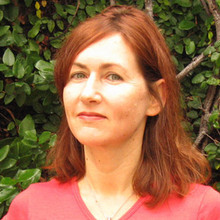
Jane Gleeson-White writes one of my favourite book blogs Bookish Girl and is also the author of the brilliant examination of Australian writers Australian Classics.
Her latest work is Double Entry: how the merchants of Venice shaped the modern world. She is a guest at the Sydney Writers Festival this week, appearing at the following events:
• The Uncommon Reader
• Molly Ringwald: When it Happens To You
• Sylvia Nasar: Is the West Over and What Would Keynes say?
• Research and Writing
Fore more information, please go to the Sydney Writers Festival website.
Here Jane answers five quick questions:
What is your latest book all about?
My latest book, 'Double Entry: How the merchants of Venice shaped the modern world - and how their invention could make or break the planet' is about a fifteenth century monk, Luca Pacioli, who taught Leonardo da Vinci maths and published in Venice in 1494 the first encyclopaedia of mathematics in Europe. His encyclopaedia also contained the first treatise on double-entry bookkeeping, 27 pages which transformed the world. This new form of record keeping created a new category of wealth - 'capital' - and made it possible to measure its increases and decreases, ie profit and loss. And so a new class was born: the merchants, who in their pursuit of profit transformed Europe from a feudal society into the modern industrial scientific world we know today.
The story goes from around 3300 BC (when writing was invented by accountants) and reaches to the financial crash of 2008, because the system Luca Pacioli described in the 15th century is still used today by corporations, nations and businesses across the world. And it may be our last hope for life on earth, because accounting is in the throes of a revolution which will make it possible for us to value the environment and nature in ways we've never done before.
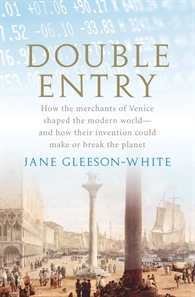
What do you love most about writing?
I love telling stories. I love words and putting them together one by one, hearing their rhythms, probing their meanings. I love sitting in solitude, and reading and researching.
How did you get the first idea for it?
One summer I spent three months in Venice as an intern at the Peggy Guggenheim Collection. The following year I returned to Sydney to study economics. In my first accounting lecture the lecturer mentioned the word 'Venice'. The name of this magical city was the last word I expected to hear in a lecture on accounting, supposedly the most boring subject on earth. It turned out there was a link between Venice and accounting - I found this so unlikely and so intriguing, I vowed then and there to look into it. When I did, I found a thrilling story, about a fascinating, once famous but long forgotten Renaissance monk, and his extraordinary legacy.
What are the best 5 books you've read recently?
'Atomised' by Michel Houellebecq
'Benang: From the Heart' by Kim Scott
'Plains of Promise' by Alexis Wright
'Soil and Soul: People versus corporate power' by Alistair McIntosh
'What Has Nature Ever Done for Us: How money really does grow on trees' by Tony Juniper
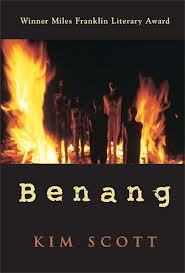
What lies ahead of you in the next year?
I'm writing a novel for my PhD in creative writing at UNSW - it will be consuming my time for the next year.
PLEASE LEAVE A COMMENT - YOU KNOW I LOVE TO KNOW WHAT YOU THINK!



